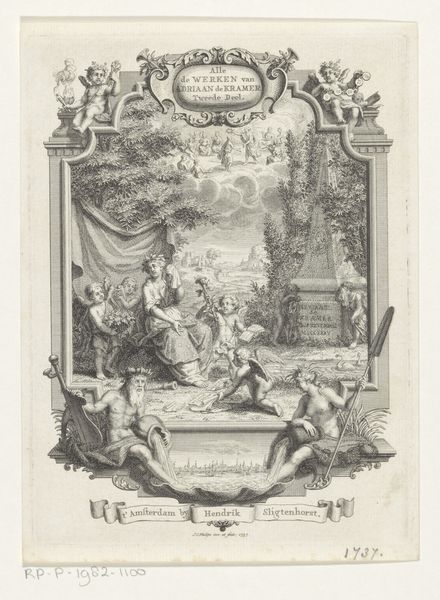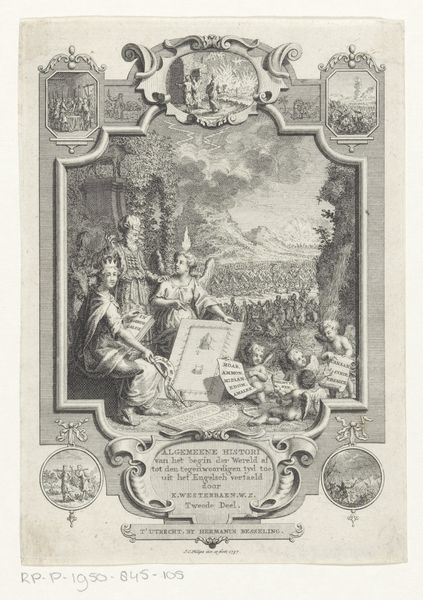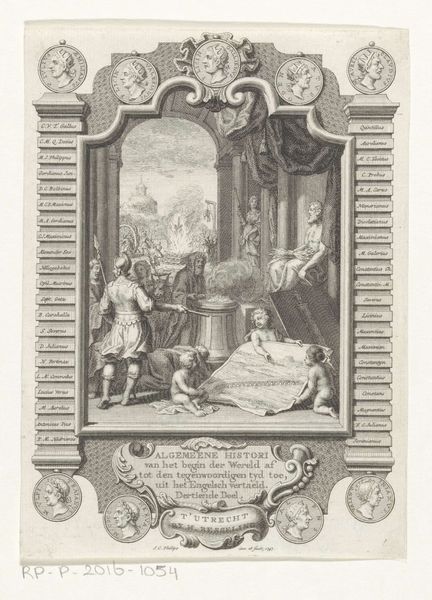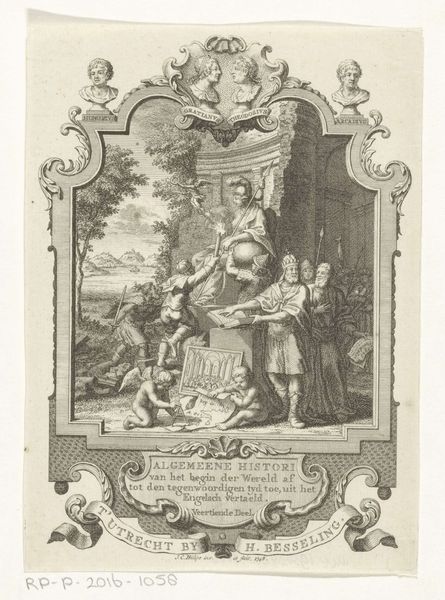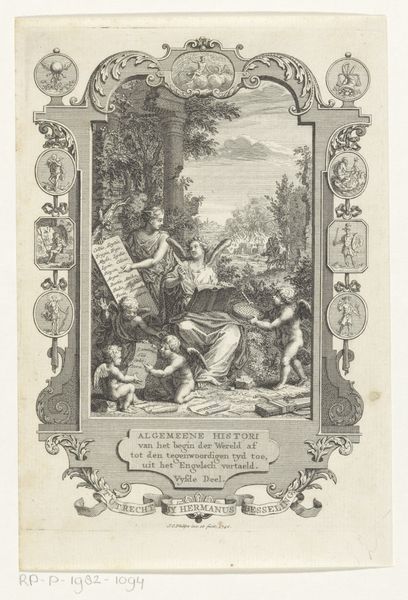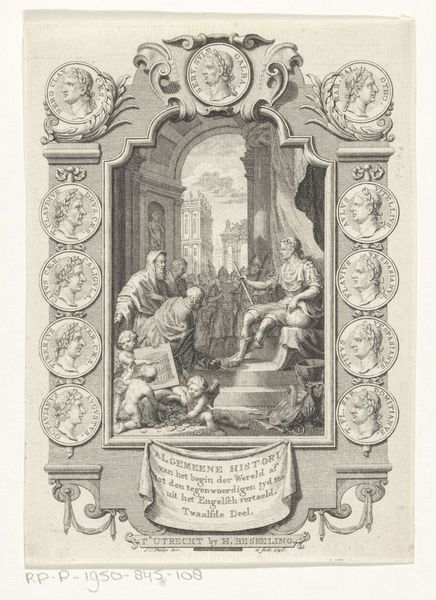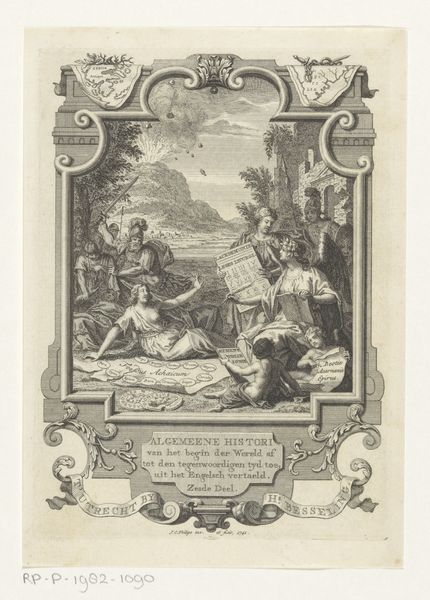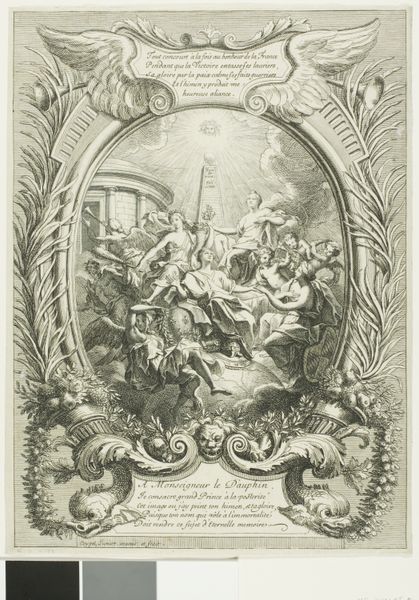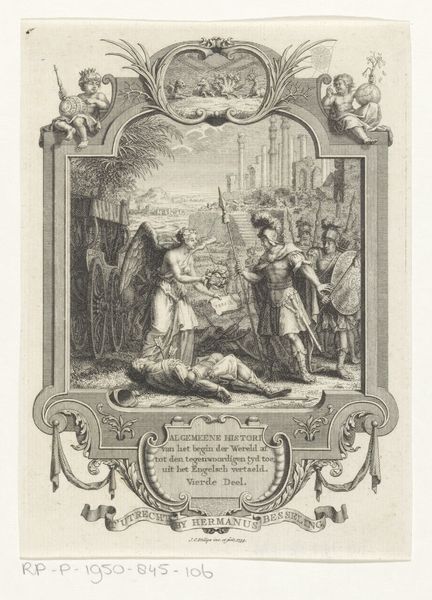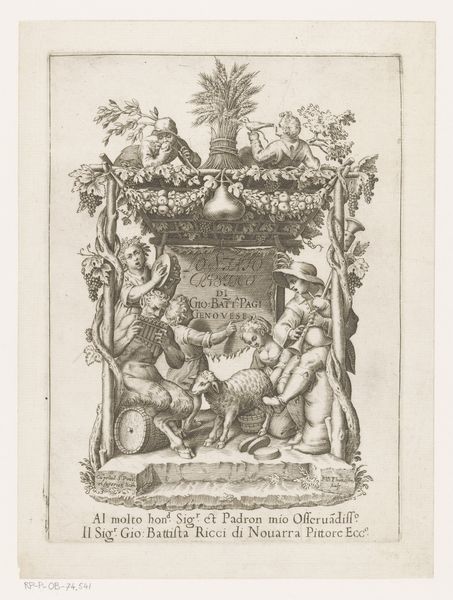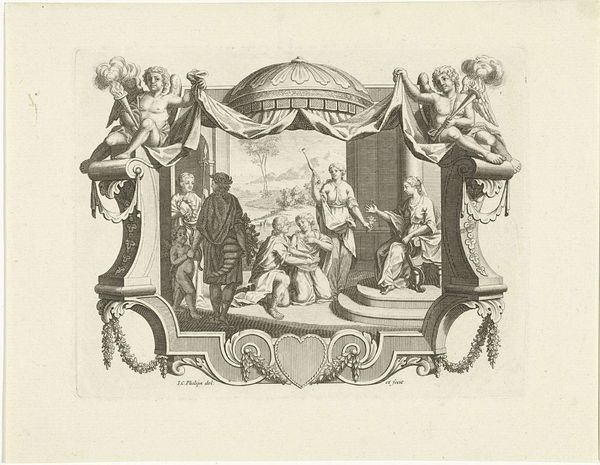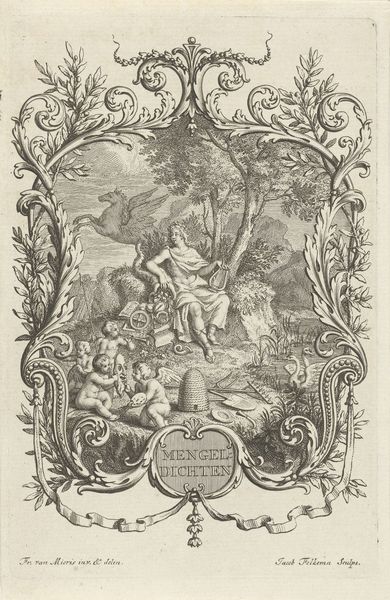
print, engraving
#
aged paper
#
allegory
#
baroque
# print
#
old engraving style
#
landscape
#
personal sketchbook
#
cityscape
#
history-painting
#
engraving
Dimensions: height 169 mm, width 120 mm
Copyright: Rijks Museum: Open Domain
This print, made by Jan Caspar Philips around 1700, is an etching – a process that uses acid to cut lines into a metal plate, which is then inked and printed. Though seemingly worlds away from modern modes of production, etching was in its day a thoroughly industrial technique, requiring specialized workshops, skilled labor, and a market for the final product. Look closely and you'll see how the crisp lines of the etching lend themselves to a highly detailed, allegorical scene about the history of Etruria. The sharp contrast and fine textures are a direct result of the etching process, where the artist could control the depth and thickness of each line. This demanded a high degree of skill and precision. The print was made as part of a larger bookmaking enterprise. This speaks to a world where art was increasingly integrated into broader systems of knowledge production and distribution. So, while seemingly a world apart from our own, Philips’ print is actually deeply embedded in the social and economic currents of its time, reflecting the rise of both print culture and capitalism.
Comments
No comments
Be the first to comment and join the conversation on the ultimate creative platform.
